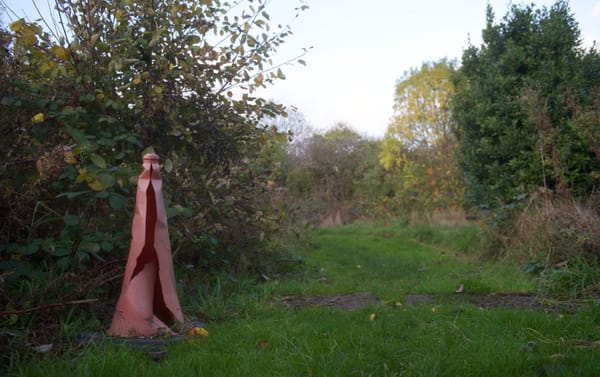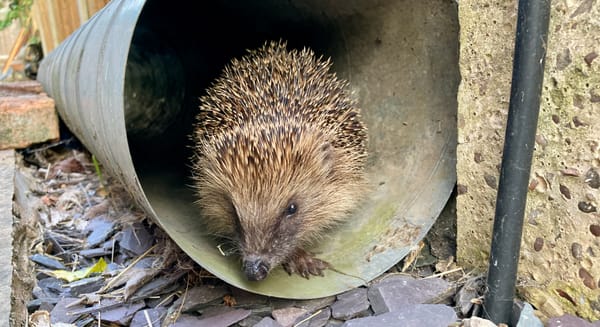The Aerobic Digest 13: Stay out of the sun
A big move of the heaps into the shade begins, and a curious piece of plastic is found.
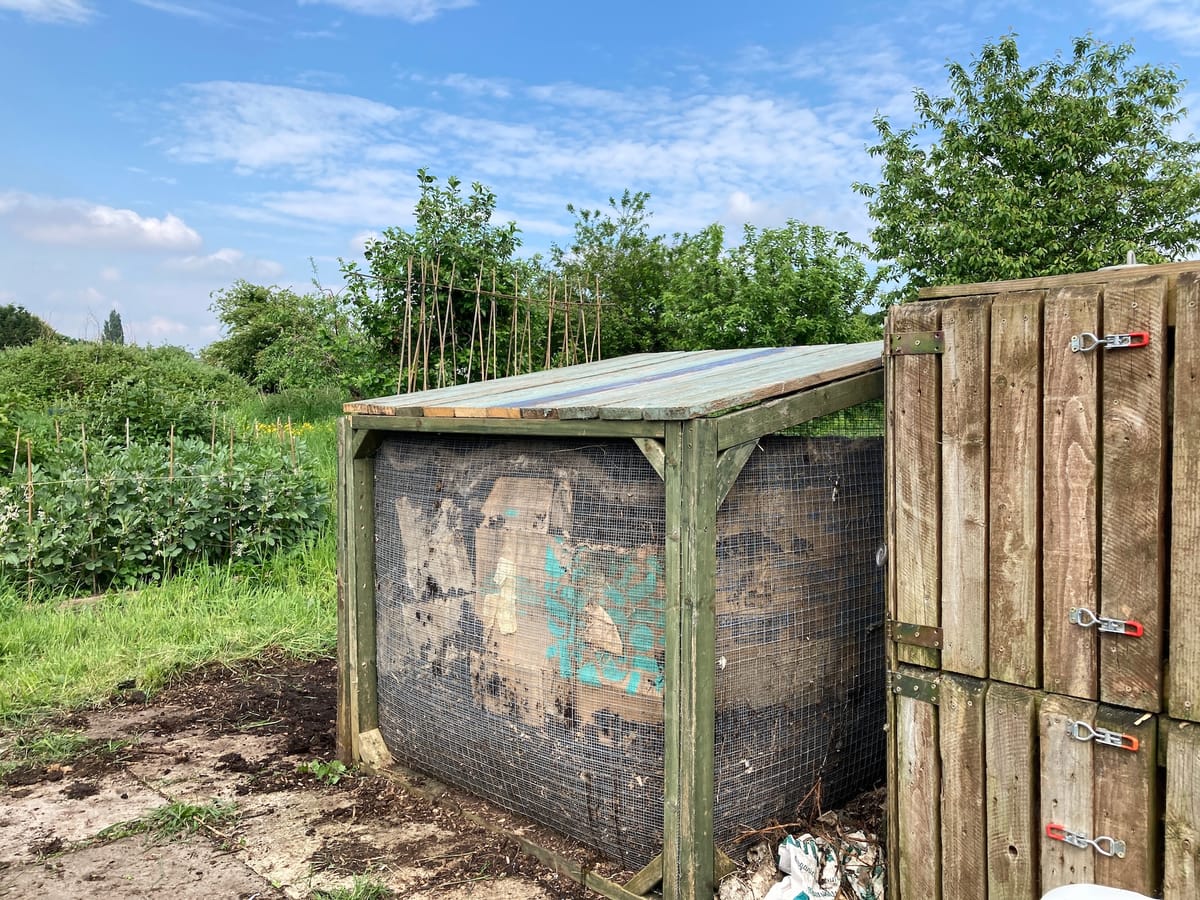
Scroll to the bottom for a photo of Harold the Barrel.
Welcome to the thirteenth issue of my little newsletter all about the noble art of composting organic matter into soil food.
Later on I’ll link to some fascinating stuff I’ve found on the internet about composting and soil health, but first you must endure / enjoy my rambling journal from the allotment on how my heaps are doing and a curious piece of plastic I’ve found in them. Hold tight.
I’ve been sketching out some changes to my composting operation and today they started taking shape. It’s mostly just a move from one part of the allotment to another, but there are good reasons which hopefully will improve things.
Last summer I noticed the hexagonal heap was drying out on one side, despite it being designed not to dry out with a layer of sheep wool insulation. The problematic side faced south, getting the sun all day, and the south side of our allotment faces an open area of grass across which the southwesterly winds roar. My heaps are very exposed to the elements, which is not ideal.
Here’s a crude illustration I knocked up because I find making this sort of thing oddly calming.
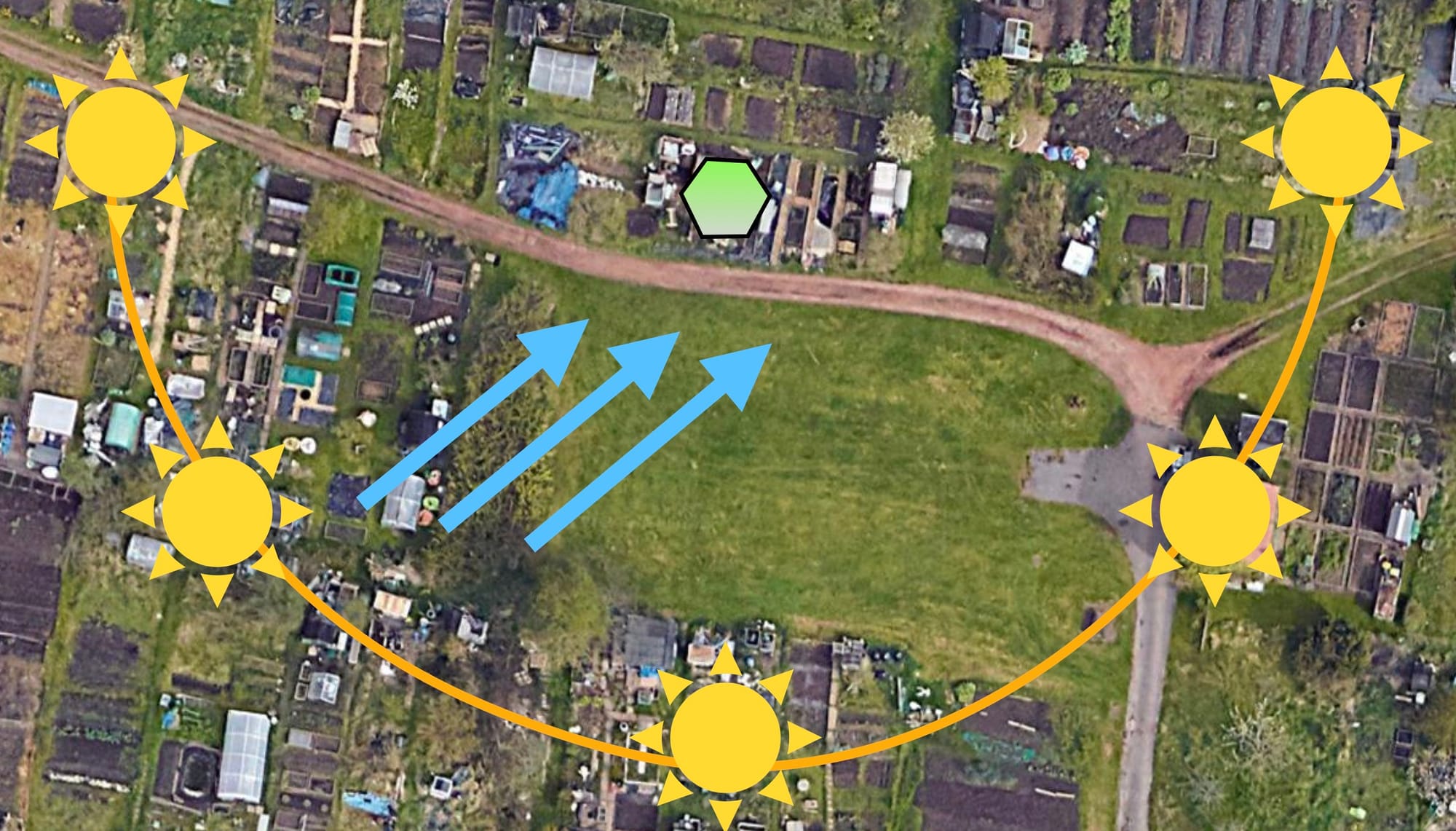
A compost heap should be sheltered from the sun and wind. I might as well have put mine on top of a hill.
I’d contemplated building a large shading structure, or covering that side of the bay with reflective foil, and then I remembered we have a lilac tree on our allotment, and in its significant shade is an area we’re definitely not planning on using. So I drew a sketch.
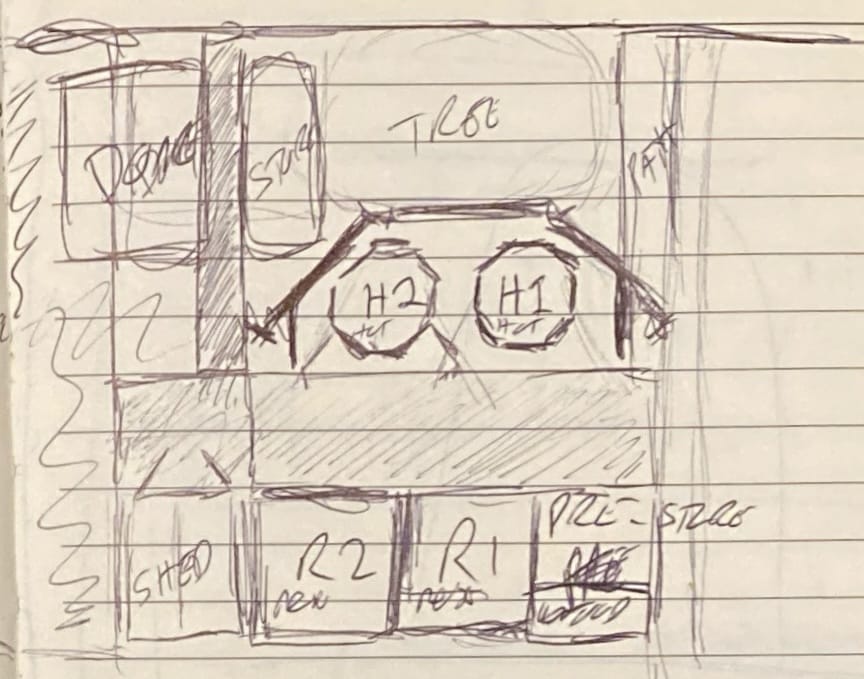
H1 and H2 are the hot composting bays, which will also be hexagonal bays, so the H is doing double duty there. (Maybe they should be H21 and H22. Something to ponder.) On either side are shading panels, salvaged from an old shed, for morning and evening while the tree will protect from midday sun.
In front of H21 and H22 (yeah, I’m liking this) will be paving slabs for turning out and mixing, while at the back are bays for maturing compost, and to store buckets and bags of ingredients during the week.
Ultimately it’s not too different to the current setup, except I get to take everything I’ve learned over the last few years and do a bunch of stuff better, which will be pleasing indeed.
Over the last few weeks Val and I have been clearing the area (so many brambles...) and today I set up the first hot bay. It’s the old cube as I want to spend some time this summer refining the hexagonal design, but it takes up the same space so can be swapped out with ease.
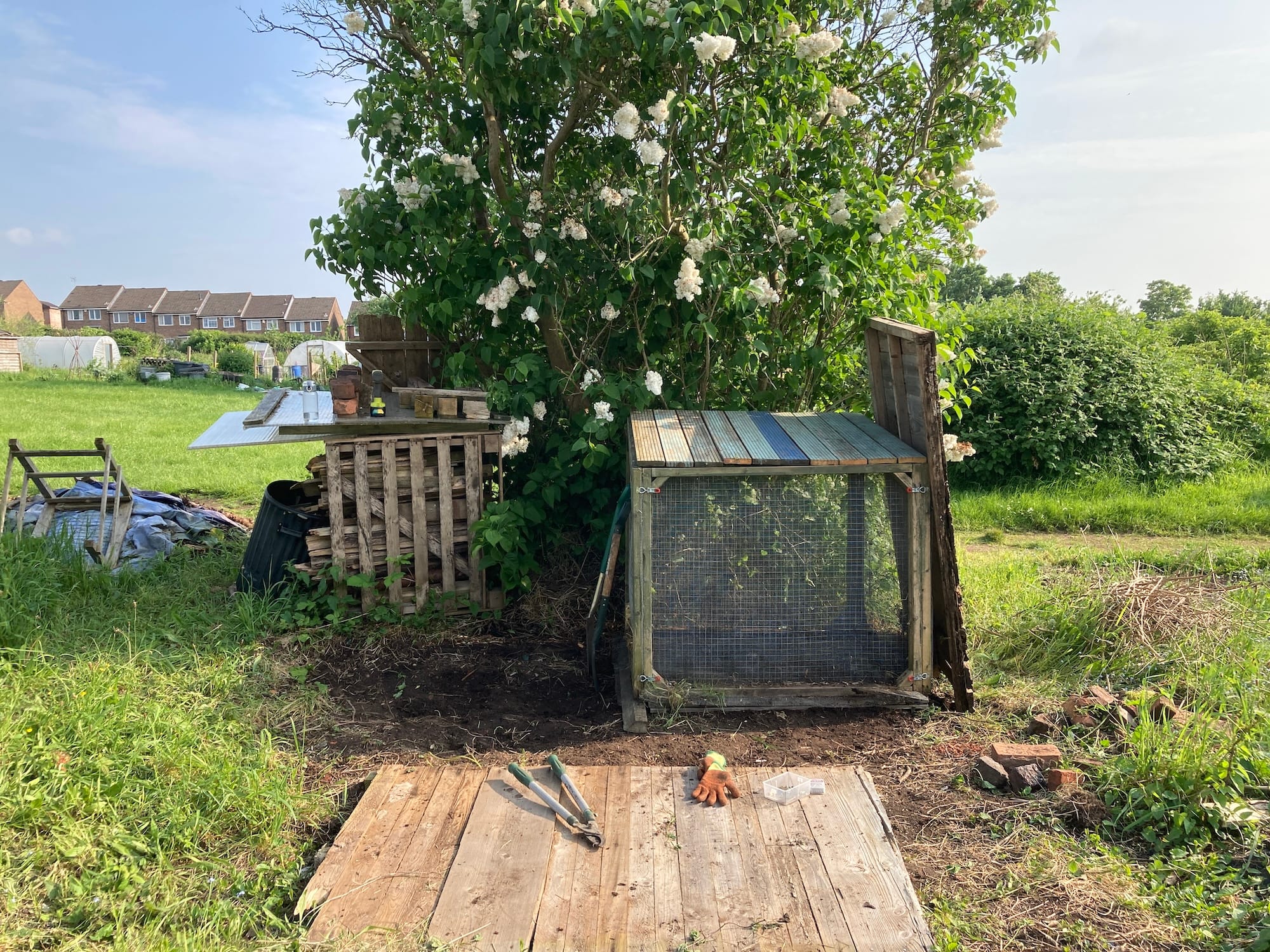
Tomorrow I’ll fix that sun shade in properly and start filling it. H22 will join in July (give or take).
Odd pieces of plastic found in my compost
An occasional series.
As compost shrinks down, turns a nice dark brown and is spread over the beds for the worms to pull down into the soil, random bits of plastic that accidentally got into my waste stream make themselves known. Ideally they wouldn’t be there at all but it’s an inevitability at this stage of the Anthropocene and picking them out is just part of the process. Usually it’s mundane stuff like elastic bands that were bundling herbs, scraps of tape missed off boxes and a surprising number of spoons. But sometimes I get a real head-scratcher.
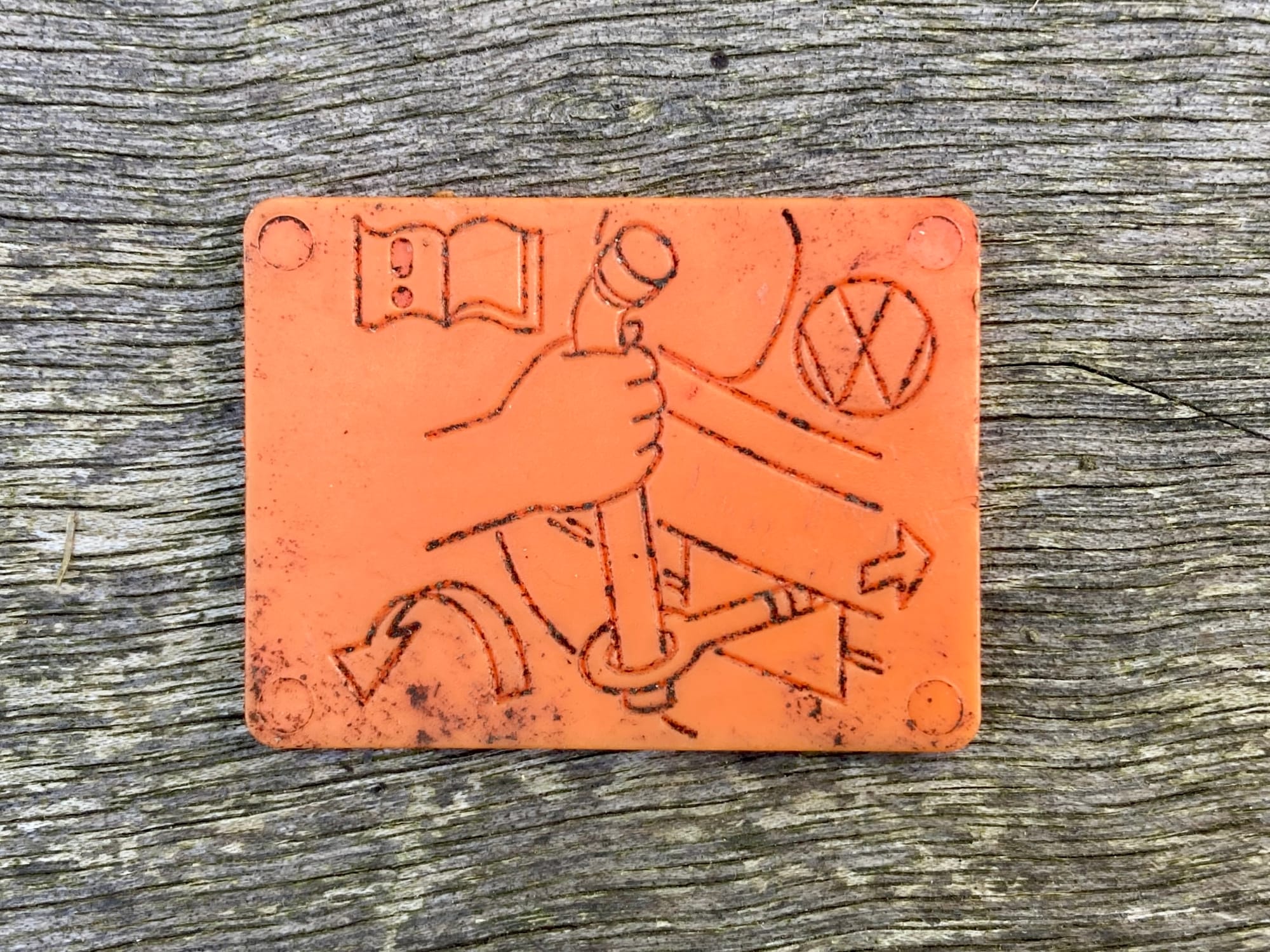
This is a perfect rectangle about 2mm thick and exactly 4cm x 3cm. The illustration is etched and has been inlayed with the compost. The back is completely smooth. While there are four circles in each corner there’s no sense of how it might be fixed to anything.
It appears to be instructions for turning something that goes in the front of a Volkswagen vehicle, maybe an attachment for towing, which needs to be firmly screwed in using leverage.
What had me puzzled for the multiples of minutes I was staring at it while forking over the heap is not what it means but why it even exists. Why is this the best way to communicate these instructions? Why is it better than, say, a sticker? What is the user of this device supposed to do with this small rectangle?
My best, if still tenuous, guess is VW produce identical cards for all their tools as part of a bespoke filing system, maybe a tiny rolodex, or a folder of plastic pockets. In which case I want to see more of them.
Anyway, that’s the odd plastic thing I found this month. Please feel free to send me photos of anything weird you come across in your heaps.
Another composting video
I’m enjoying making these videos of the compost management process. Mostly I like how the bugs and worms wiggling are really visible at high speed, zooming around as they try to get away from the light. Anyway, this is me emptying the resting heap into the maturing bay at 8x speed
I started filling this heap in late December 2023, filled it by the start of March 2024, turned it on 10 April and in this video am decanting it on top of the previous batch so it can mature for a couple more months, and also free up the bay for the next heap.
Elsewhere on the internet...
Each issue I feature a handful of articles, videos and resources I’ve come across on the internet related to composting and soil health. I’m currently archiving the best of them here.
Sound recording follow-up
Last issue’s experiments in recording the soundscape of my compost heaps went down well, despite being not dissimilar to a badly tuned radio. Thanks for all the encouraging remarks! I posted the video to Mastodon before writing the newsletter, and just as I hit publish Broadfork sent me this fantastic Guardian article on this very subject:
Last year, a study found soil was the single most species-rich habitat on Earth, with more than half of all species living in it. But only a fraction have been identified, and most are too small to see. Soundscapes are becoming an increasingly popular way of monitoring wildlife abundance, above ground, beneath the earth and underwater.
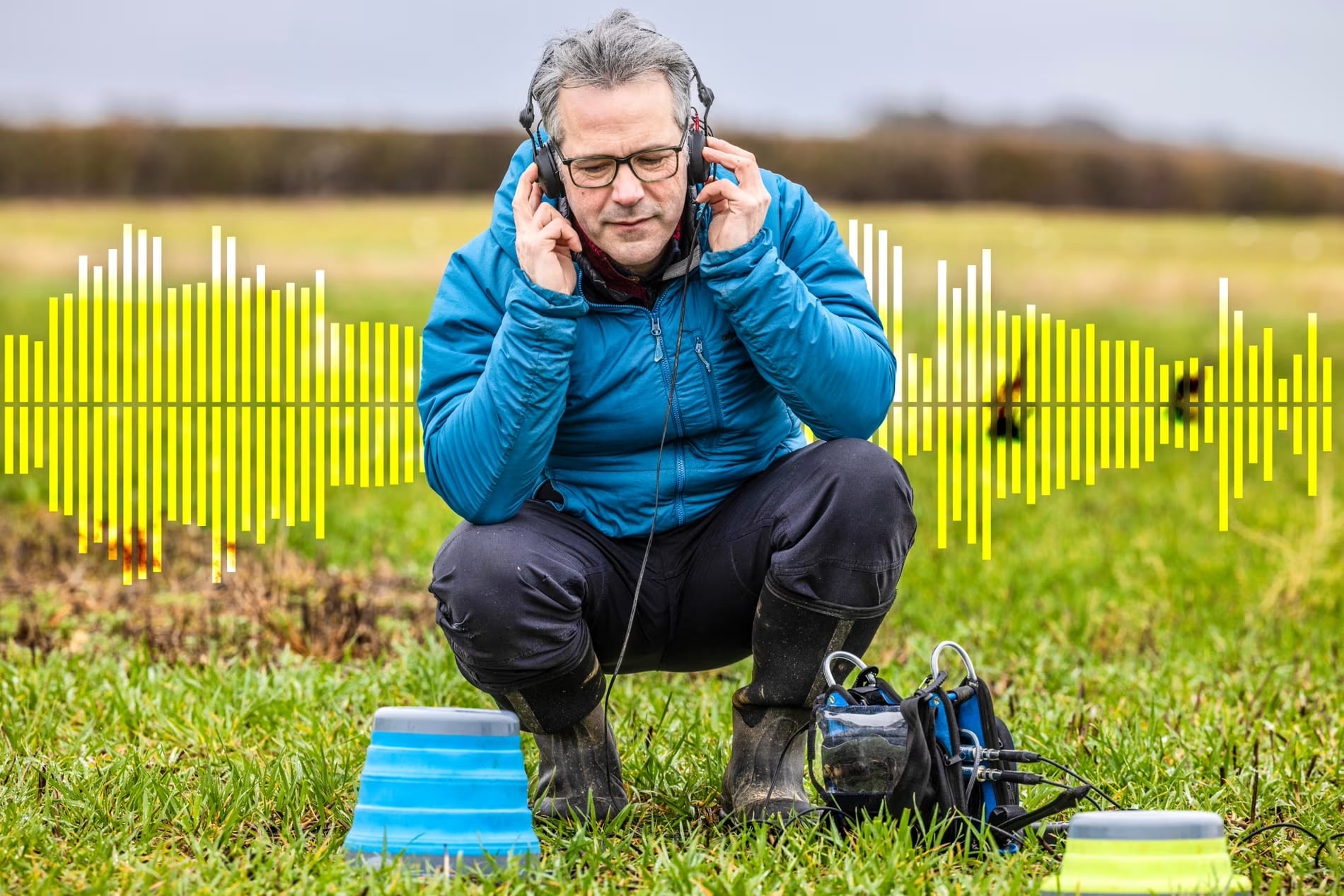
The big idea is to gather data about the subterranean biosphere without disturbing it, and identifying the acoustic signatures of different species gives farmers a relatively simple way to measure the biodiversity of their soil. It’s also giving some insights into how changes above, whether seasonal or human-caused, affect what’s happening down there.
Early research from Switzerland shows soils were producing the most complex sounds in spring and summer, which declined in autumn and winter. Abrahams’ previous research has shown that soils in restored forests in the UK seem to have a greater diversity of sounds than soil from deforested plots. He says: “As a general rule, the more diverse it is above ground, the more that is going on in the soil.”
The Guardian’s Soundscapes series, exploring "how our ears tell the story of ecological decline and recovery" ran through April.
How to make a decomposition timelapse
David Trood, aka the Weedy Gardener, shows us how to make timelapse movies of composting worms demolishing a banana in three weeks.
It does involve a reasonable amount of photography equipment and a dark studio (David was a professional photographer before he gave it all up in lockdown and became a gardener) but if you have all that and fancy a fun project, it’s actually fairly simple.
Reminds me of how mushroom timelapses are filmed.
The sun about as energetic as your compost heap
This is a story about how our sun is actually pretty inefficient. But what’s interesting is they use the energy generated by a compost heap as the yardstick, which I’d not seen before.
The power output of the core of the Sun is about 276.5 watts per cubic metre — that's almost three of the old 100W light bulbs. On a power/volume basis, it's a lot less than your body emits (about 100 W) and around the same as a compost pile.
Good to know my heaps (which have a capacity of between 1.1 and 1.4 cubic metres) are generating around 300 watts, which is significant, but also not that much. Back to speculating how to capture and re-use it. via
The Four Pillars of Composting
The Wikipedia entry on composting has probably the most succinct yet comprehensive summary of the fundamentals of compost I’ve seen, and I’ve seen a lot of attempts since starting this newsletter.
Composting organisms require four equally important ingredients to work effectively:
Carbon is needed for energy; the microbial oxidation of carbon produces the heat required for other parts of the composting process. High carbon materials tend to be brown and dry.
Nitrogen is needed to grow and reproduce more organisms to oxidize the carbon. High nitrogen materials tend to be green and wet. They can also include colourful fruits and vegetables.
Oxygen is required for oxidizing the carbon, the decomposition process. Aerobic bacteria need oxygen levels above 5% to perform the processes needed for composting.
Water is necessary in the right amounts to maintain activity without causing locally anaerobic conditions.
Posting it here because for future reference, and because it’s as close to a work of art as we get in this game. Seriously, chapeau enlevé, Wikipendians.
Also, WONC. I'm thinking stickers, t-shirts maybe...
Meet Harold the Barrel
It was Compost Week in Australia recently and this chap made an appearance.

That’ll do for this issue. I’ve already started sketching out issue 14 so it might be sooner than later. Although I’ve probably jinxed that now. Within the month anyway.
If you have any questions about composting that I could answer in a future issue, please send them along. It's always good to have a writing prompt. And I'm always up for interesting links to share here.
Email to info@aerobicdigest.email or @ me on Mastodon or Bluesky where I keep tabs on the various #compost tags.
Your friend in rotting vegetable matter,
Pete Ashton
